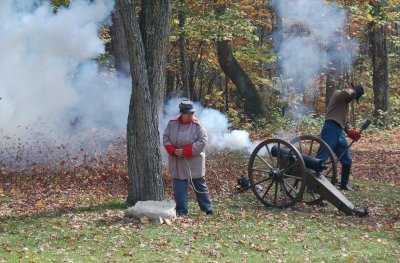I've been writing, but not posting, recently. I'm still substituting for a yet-to-be-hired teacher for special needs students, and I'm dealing with a lot more people on a daily basis than has been my habit for many years. I've started to "blog" all sorts of interesting, wonderful, appalling things that the folks at school say and do, and then pulled up short. It's been my policy to avoid writing about my friends and neighbors, except in very vague terms, to protect their privacy. (Except for the doily cheater, but hey, I don't know who she was, and how much consideration should you get for fraudulent display of doilies, anyway?) I don't think I have many (any?) local readers, but who would want to hear through the grapevine that "Bootsie has been spilling the beans concerning your life on the Internet"?
Pair this self-censorship with my uncertainty about the direction I want my "Web-presence" to take, and you get very few posts. Dave, of Via Negativa, has invited me to submit something to qarrtsiluni on their "Education" theme. I was very excited about this, but quickly found out my most interesting themes violated my students' privacy. They may be seven years old and illiterate now, but that could (God willing) change.
In a comment this summer Dave suggested
...your mission could be to portray Pocahontas County in such an unflattering light that the flood of tourists would dwindle to a trickle. You could just make stuff up, like James Dickey. The local chambers of commerce would hate you.
I have since given much thought to writing Southern Gothic horror stories about fictional Pocahontas County residents, even to nominating Droop Mountain as the very capitol of
The Land of the Nine-Fingered People. I am blessed to have a reader who understands me so completely. However, I could never invent anything to rival the things people really say and do. To paraphrase Dr. Watson, "The world is not yet ready for the Denmar kangaroo incident."
Other bloggers have been writing about the limits of the stories they may tell. I was especially struck by prariemary's recent posts on the topic "Who Should Tell the Stories?"
Who owns what stories?...Repeatedly in early years, individuals came to the reservation, took notes...wrote them up, sold them to publishers as original works, and collected the income. None of that income was sent back to the tribal storytellers. Some of the white writers claimed to be scientists who would use the stories to analyze and record the society of the tribal people -- others were simply acquiring stories the same way they would acquire beadwork, attractive curiosities....they not only made money from the stories, but also drained them of significance.
Pocahontas County "informants," such as still-living members of the Hammons family, have voiced feelings of exploitation. Although I know for a fact that the Library of Congress boys made little or no money from the stories and music they got from Burl, Sherman, and Maggie, they did carve notches in their academic status gunstocks. If I were to tell you that Denmar kangaroo story, with all the flourishes and detail it deserves, would I be exploiting my neighbor down the mountain? (Never mind that I could not possibly tell it as well as he can.)
I think the solution is...taking time. Really listening. Spending the day. Becoming part of the scene....Learning what stories mean to the tellers of them. I think that whether one is IN or OUT of the group, one can witness. One has an active obligation to witness accurately and possibly to record that somehow. It is the way to wisdom.
Framing it that way, I think I may try to tell few more tales. If it starts to sound too much like Yoknapatawpha County, perhaps I'll start a second blog.








